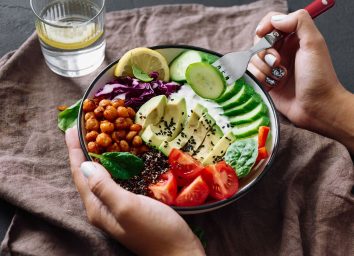15 Tricks to Get Your Kids to Eat Vegetables

The battle between children and a plate of peas is as old as time. While you may have assumed other parents struggle to get their kids to eat vegetables, what you may not have realized is that diet experts go through the same torturous trials. Just like your kids, their kids are ninja masters of vegetable camouflage, sneaking their green beans into the dog’s bowl, burying their peas under the mashed potatoes, and hiding Brussels sprouts on the window ledge behind the curtain. Yeah, that’s where the smell is coming from.
To help you turn your veggie loather into a veggie lover—without a knockdown-dragout-battle-of-the-broccoli—Eat This, Not That! checked in with a group of nutrition experts to see what they’ve learned through trial and error.
Butter ’em Up

There’s a scientific explanation for why most kids loathe broccoli and kale. Bitterness. In the wild, plants that are bitter to the tongue signify potential toxicity—”Warning, Will Robinson!” Young tongues are particularly sensitive to bitterness, and kids may instinctively repel from bitter foods—unlike adults who’ve grown accustomed to the taste and know that the bitterness comes from the good-for-you nutrients, like calcium, polyphenols, and flavonoids, inside. So to get your kids over that hump, mask the bitterness with butter. “Everything tastes better with butter, especially vegetables,” says Cassie Bjork, RD, of Healthy Simple Life. “Not only does butter—the grass-fed variety, in particular—contain vitamins A, E, and D3, which are important for growing kids, the added fat helps their little bodies absorb the vitamins from the vegetables.” Try adding a tablespoon of butter per half cup of mashed sweet potatoes, green beans, broccoli, and cooked spinach to temper the bitterness.
Have Them Eat Veggies First
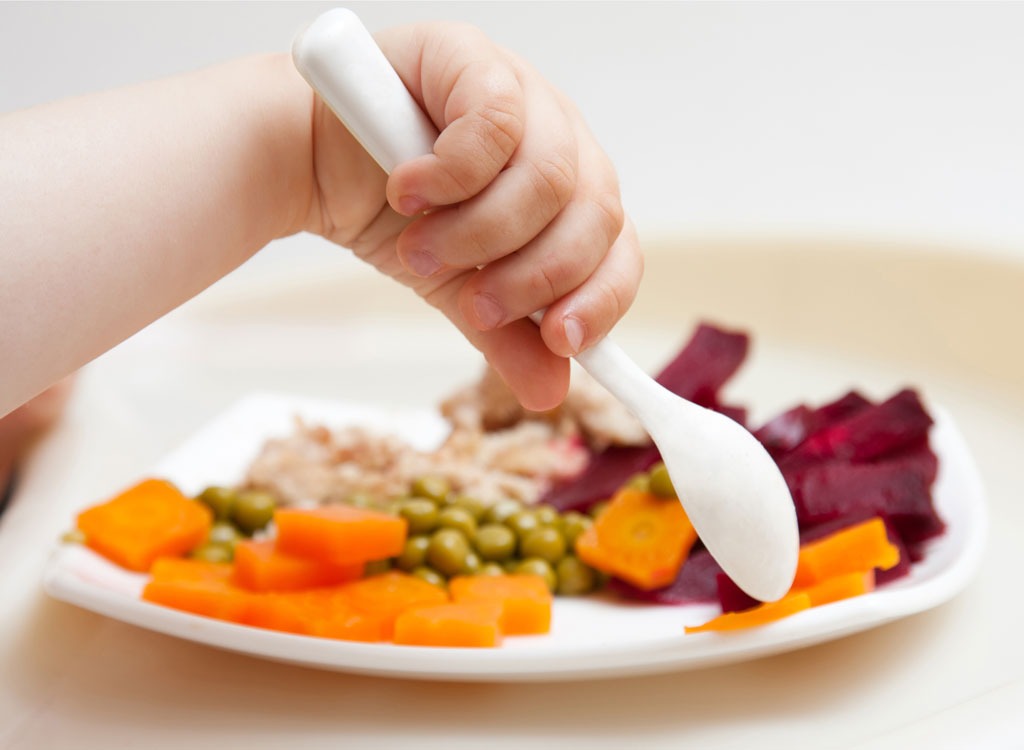
We aren’t really suggesting that you starve your kids, but waiting until they are really famished to serve up a pile of vegetables—carrots, celery, cucumbers, and red peppers—might do the trick. “Right as my girls walk in from school I try to have a vegetable plate out; this way it’s the first thing they see and they don’t even have to think to ask for anything else,” says Ilyse Schapiro, MS, RD, a registered dietitian with private practices in New York and Connecticut. “They have other snacks, but they at least get their veggies in first.”
Pick Your Own Produce

“Fresh-picked vegetables from a country farm taste a thousand times better, and they are more visually appealing than grocery store produce,” says Laura Cipullo, RD, a nutritionist and author of the blog and the book The Body Clock Diet. She recommends taking your kids to a vegetable farm where they can pick their own: “I mean, who wouldn’t want to snack on beans when they taste like sugar and crunch like chips?”
Try a Veggie Dip

“Studies have found that kids are more likely to eat their veggies if they’re served with dip, and all three of my kids—who range in age from 7 to 12 years old—absolutely love ranch dressing, so I often serve it on the side,” says Toby Amidor, MS, RD, CDN, nutrition expert and author of The Greek Yogurt Kitchen: More Than 130 Delicious, Healthy Recipes for Every Meal of the Day. Commonly containing MSG and soybean oil, store-bought ranch dressings aren’t the healthiest. But you can do better with homemade: Simply mix a garlic powder, onion powder, dried dill, kosher salt, Worcestershire sauce, cayenne pepper, and fresh chives into a cup of plain Greek yogurt.
Apply Peer Pressure

Kids are, essentially, lemmings. If one jumps into a mud puddle, you can bet the whole gang will be in there doing their best Lord of the Dance impression in short order. So, tap the power of their copycat behavior to get your kids to eat more vegetables. “Send your child to a friend’s or cousin’s home for dinner—especially if the other children do eat their veggies,” suggests Christine M. Palumbo, MBA, RDN, FAND, a Chicago-area registered dietitian and nutrition communications consultant. The peer pressure of watching the other kids scarf down their vegetables just might encourage your kids to at least take a taste.”
Put on a DVD

Cipullo recommends planting your kids in front of a TV set and watching “Copy-Kids Eat Fruits and Vegetables,” a DVD that encourages kids to improve health habits by watching and copying other kids. It features 12 chapters, one for each of 12 fruits and vegetables.
Use Choice Words

If you haven’t noticed yet, kids love exerting power and control. It makes them feel like grown-ups. So give them their choice of vegetables and see if that doesn’t empower them to gnaw on a carrot. Go to the grocery store or farmer’s market with your child and let him help pick out the vegetables, says Sarah Koszyk, MA, RDN, owner of Family. Food. Fiesta. “When children help decide what they are going to eat, they often don’t object when it ends up on their plate.” Plus, this is a sneaky way to teach them how to pick good produce.
Offer a Two-or-One Deal
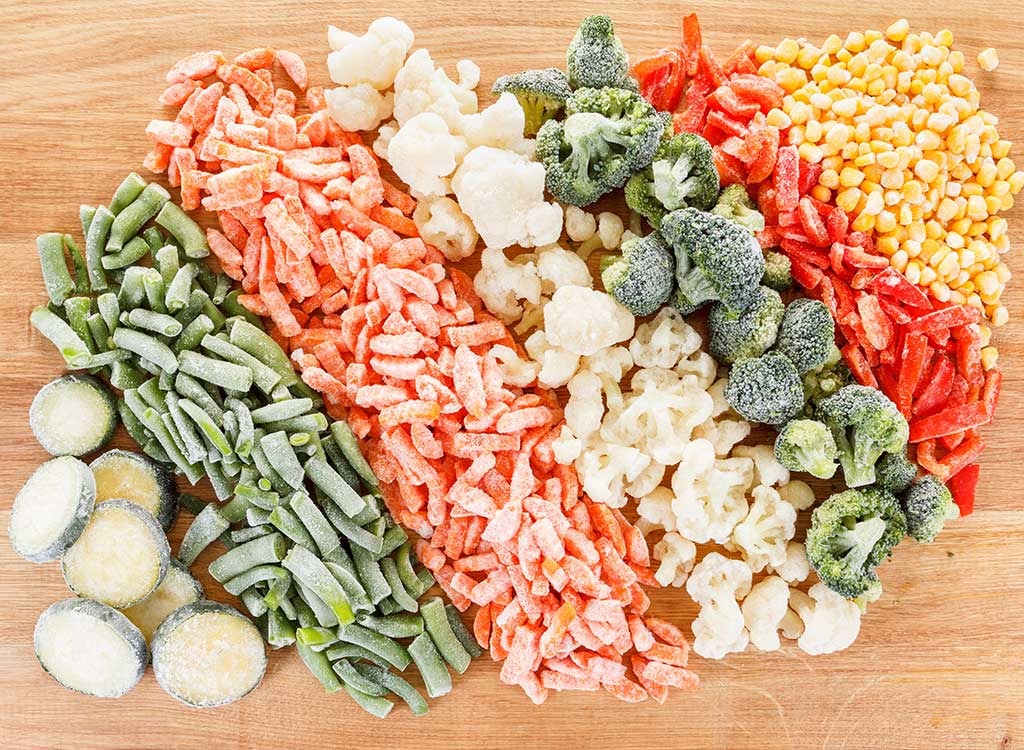
This one’s really sneaky. At dinner offer two colorful vegetable options and ask your kids if they want broccoli or carrots or both. “You’ll be surprised how often your kids will opt for both when they feel the decision is theirs.” Says Liz Weiss, MS, RD. They’ll always choose more of something when given the option.
Eat Your Own Edamame

“Be a positive role model by eating healthy yourself! While my 5-year-old isn’t interested in trying everything I eat—like Brussels sprouts, for example— she will gladly sit alongside me and eat edamame, avocados, and veggies with hummus,” suggests Michelle Dudash, RDN, author of Clean Eating for Busy Families.
Use an App

Want your kids to eat more vegetables? Use veggies as an appetizer so they don’t seem like part of the traditional meal. “When my kids are hungry and waiting for dinner to finish cooking, I put some vegetables on their plates,” says Schapiro. “If it’s in front of them, they will eat it. But trust me, they would never open the fridge and say, “Mom, can I have a carrot?” Weiss knows that serving bread at the beginning of the meal can curb anyone’s appetite for vegetables— or the rest of the meal, for that matter. So she serves delicious, colorful veggies at the start of the meal when everyone is famished. To make those veggies more appealing, serve them with hummus or a homemade, flavorful sauce. “Roasting your pre-dinner veggies may also be worth trying. This cooking method brings out vegetables’ natural sweetness, and may make them more appealing to kids” she says.
Simply Ignore Them

“I’ve found the less attention and pressure I put on my kids, the more likely they are to eat their vegetables,” says Schapiro. Also, I try to not let them snack too much on extras during the day. That way, they’re appropriately hungry during meals and are more apt to eat their vegetables.”
Turn Your Child Into Your Sous Chef

“One of my secret weapons is getting my kids involved in the kitchen,” says Michelle Loy, MPH, MS, CSSD, Registered Dietitian Nutritionist and owner of Go Wellness in Orange County, California. “When my kids are there by my side, helping me put kale in a green smoothie or tossing Brussels sprouts with olive oil, salt, and pepper for roasting, they’re much more willing to eat them. Research has shown that children who are involved in the preparation of foods, such as vegetables, develop more positive attitudes towards and preferences for those foods, and I have definitely seen this with my own three children.”
Have a Vegetable Celebration

When we turn meals into festive events, it helps our children enjoy and try new foods, Lori Zanini, RD, CDE, and spokesperson for the Academy of Nutrition and Dietetics. For example, you could have an Italian theme and incorporate a number of tomato dishes throughout the week. “Set the table with colorful plates and utensils, and even try arranging vegetables into a shape or figure to help kids see their vegetables as a fun experience rather than something they are forced into consuming.”
Beat The Veggies
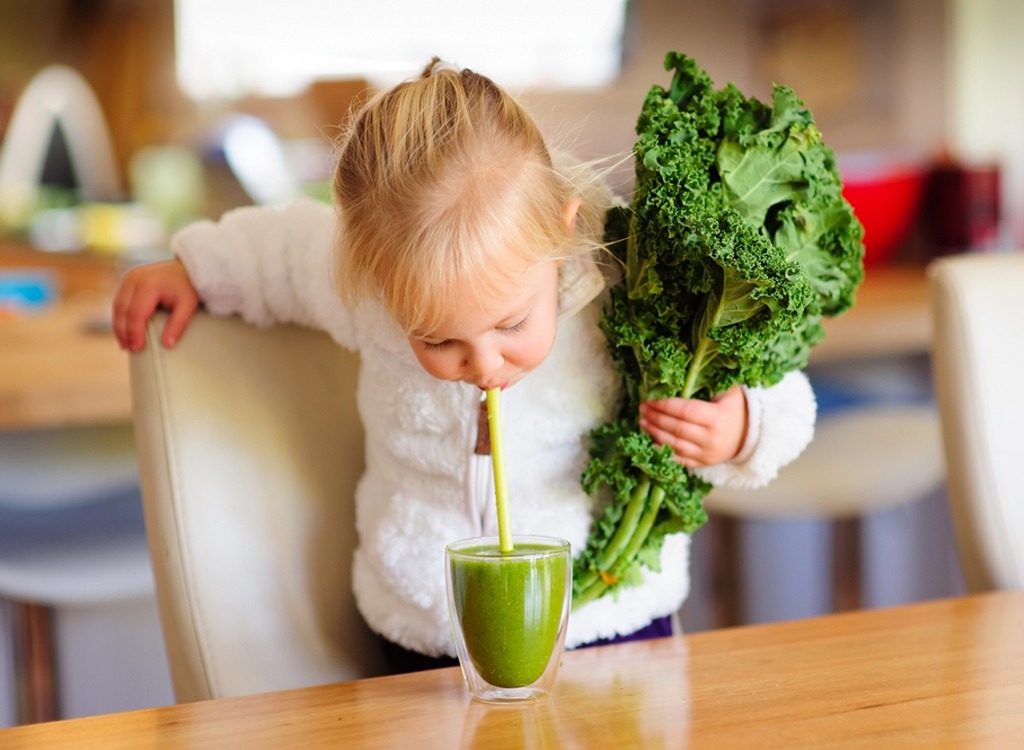
Pureeing vegetables may be the secret to getting kids to covertly consume more. A study in the American Journal of Clinical Nutrition reported that children ages 3 to 5 nearly doubled their consumption of vegetables on days when they were served pureed vegetables instead of whole vegetables. Try blending half an avocado, a half cup of spinach, half of a small banana, ¼ cup canned pumpkin and ½ cup of either almond milk or water for a nutrient-dense smoothie, Bjork suggests. “Your kids won’t even taste the spinach—promise! For an added nutritional bonus, you can also blend in a crushed or liquid form of their daily vitamin supplement.”
Don’t Throw in the Towel
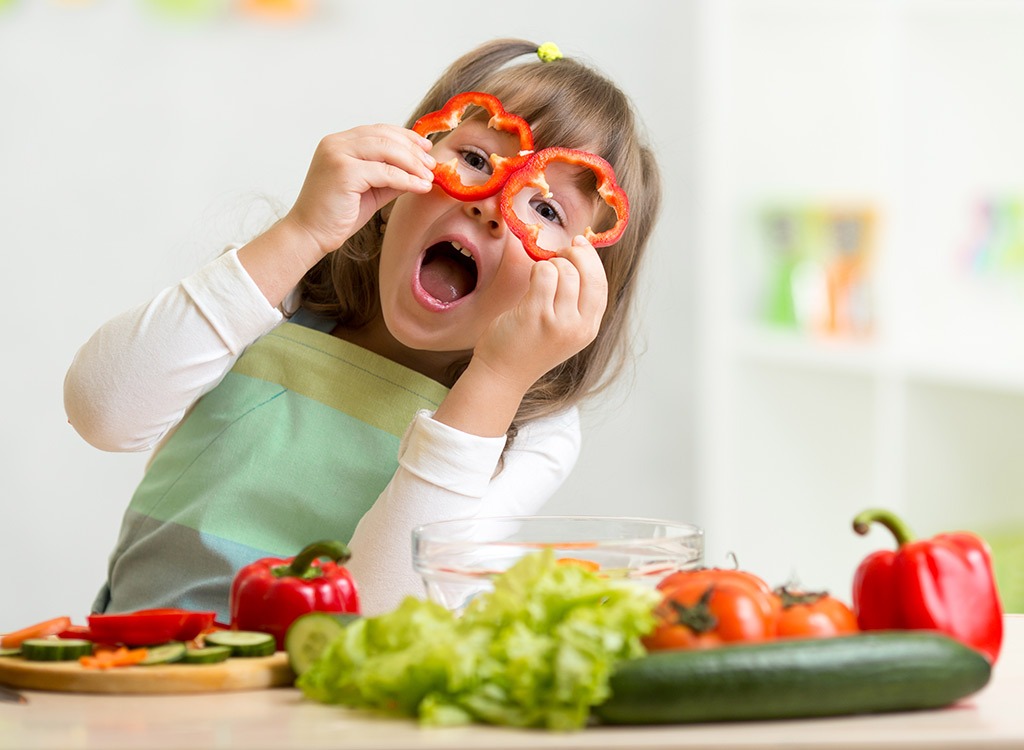
“If my kids don’t like a vegetable, I don’t give up! It may take 10 or more exposures to a food before children feel comfortable trying and accepting it,” Loy says. “I just keep offering the vegetable at different meals and in different ways without pressuring my kids to taste it or like it. This is actually how my older two children finally ended up asking for salads with dinner!”
Hide Veggies In Soup
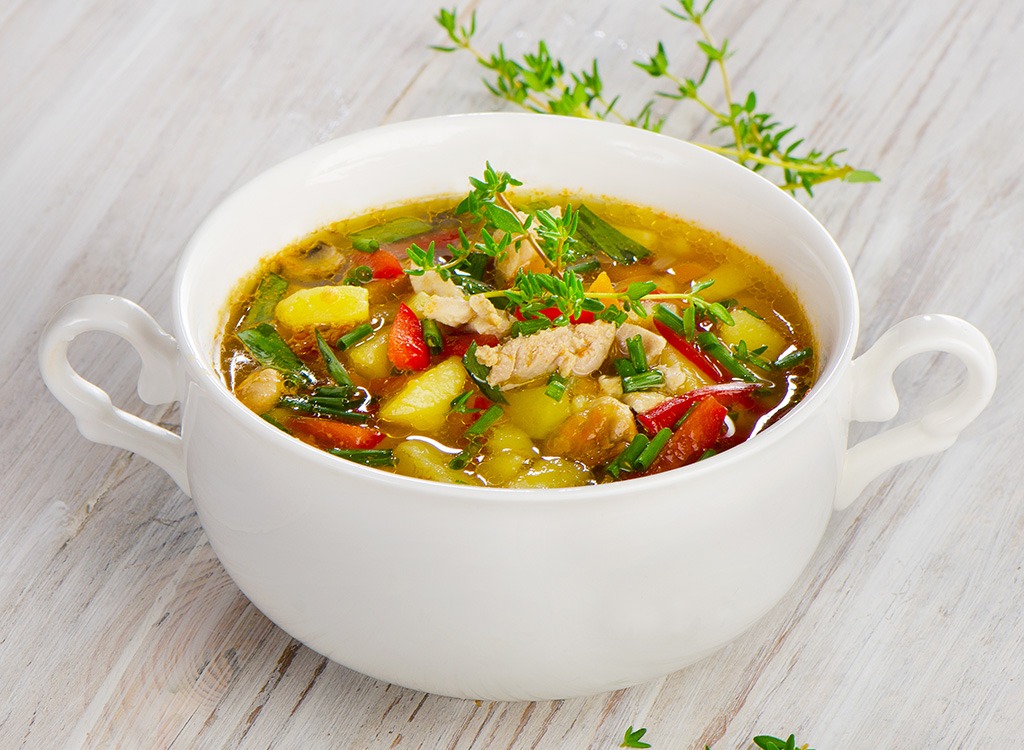
Your kids can’t complain about the turnips in their soup if they can’t see the turnips. Try this special ops mission that has been used effectively every Friday night for years by Amidor: “Every Friday night I cook a homemade chicken soup, and the stock is made from a combination of veggies like parsnips, turnips, carrots, cauliflower, onion, and celery. Since the veggies are strained from the stock before it’s served, my kids don’t see the vegetables in their soup, but I know they’re getting the nutrients from those veggies in their weekly bowl of goodness.” If you think that’s genius, then you’ll love these dessert recipes with hidden vegetables!

